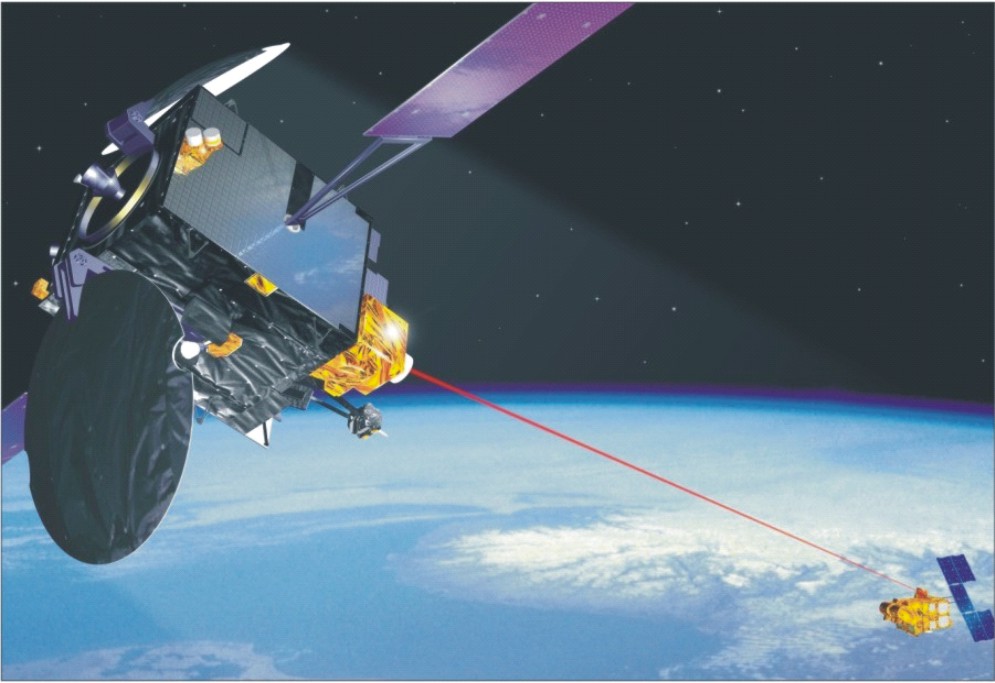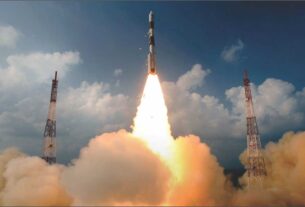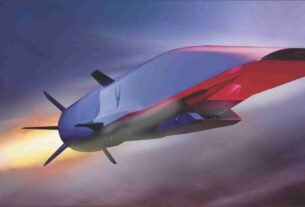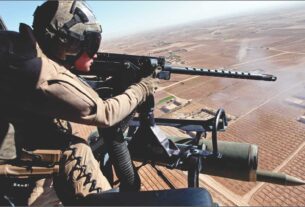The political-bureaucratic nexus in New Delhi which lords over the Indian defence establishment seems to be dithering over giving clearance to the long overdue Indian aerospace command.
Though it is well over five years, since the Indian Air Force (IAF) has been pressing for the creation of an aerospace command which is essential to lay the groundwork for developing capabilities to degrade the space weapons of the adversary, New Delhi is yet to demonstrate the vision to take the geo-strategically important decision on the formation of Indian aerospace command.
“As the reach of IAF is expanding, it has become extremely important that we exploit space and for it you need space assets,” was the observation of a former IAF Chief.
There is no denying the fact that an aerospace command would be a force multiplier and game changer for Indian defence forces. The US Strategic Command lays stress on full spectrum dominance of space through joint vision 2020.
Indeed, the US Strategic Command has made it amply clear that denying adversary the access to space is one of its key goals. Access to space can be denied through a variety of ways-disabling the satellites in orbit, jamming and putting out of commission the ground support network.
The Rumsfeld Commission report on US space security has highlighted the need for the US Government to “ensure that the President will have the option to deploy weapons in space to deter threats to and, if necessary, defend against attacks on the US interests.”
Expanding reach
And in the Indian context, an aerospace command is crucial to expand the strategic reach and strike capability of the defence forces by a substantial extent.
Rightly, IAF Chief ACM NAK Browne has stated that “time has come that we look into the realm of aerospace command.”
In the context of growing global instability and worsening security situation in South Asia region, the formation of an Indian aerospace command assumes utmost significance.
The only stumbling block in the way for creating an Indian aerospace command seems to be the failure of the political leadership in New Delhi to foresee the long term threat to Indian security and the territorial integrity of the country.
There is no standard formula or definition focussing on the structure and functions of an aerospace command even as it is widely recognised that enhancing situational awareness and denying the enemy access to space assets are the key goals of a well endowed aerospace command.
Clearly, an aerospace command is a dynamic entity that needs to be routinely augmented by the induction of ‘advanced technology systems’. An aerospace command is a continuously evolving strategic structure that would absorb technological elements as they emerge.
On its part, IAF has made detailed studies of the issues related to the structure and function of the aerospace command as existing in other countries.
However, the kind of aerospace command that India would put in place would reflect the needs specific to the Indian situation, extent of funds available as well as technology and expertise that could be mobilized freely.
The Ballistic Missile Defence Shield (BMD) being put in place by Defence Research and Development Organisation (DRDO) could also provide a robust support to the Indian aerospace command.
More importantly, in the backdrop of India’s declared national policy of no first use of nuclear weapons, a fully integrated aerospace command assumes significance in that it could provide advanced warning of an impending nuclear attack.
On another front, an aerospace command would help position India as a military power of global standing. As defence analysts point out, a well equipped aerospace command could go a long way towards helping India meet its emerging strategic challenges and security threat in a very effective manner.
By all means, the whole exercise of creating a multi-layered aerospace command should focus on ensuring that in a fast changing battlefield scenario, all available tools should be harnessed in an integrated and synergistic fashion to stay at the winning edge of the war.
The biggest hurdle that India would face while getting involved in assembling the building blocks of a full fledged aerospace command is the integration of the satellite systems into the architecture of the tri service aerospace command.
Tri-service command
Further, all the three wings of services should work in unison- without any element of “competition and rivalry” creeping in – towards the goal of creating the national aerospace command.
Incidentally, IAF’s ‘Defence Space Vision 2020’ outlines the need to harness the space resources in a big way to buttress the Indian defence preparedness.
Indeed, since the early 2007 anti-satellite test carried out by China, in which an aging weather watch satellite located at an altitude of 537-km from earth’s surface was reduced to smithereens by firing a modified version of a ground based medium range ballistic missile, the clamour for the setting up an Indian tri service aerospace command by the defence forces has become strident.
For this anti-satellite test by China has been widely perceived to be a major Chinese initiative towards preparing the ground for a full fledged space war.
Strangely, China has been advocating a need for banning the deployment of destructive devices in outer space.
The major Indian concern that stems from the Chinese anti satellite test is the need to ensure the “safety and security” of Indian space assets. As it is, Indian Space Research Organisation (ISRO) operates one of the largest constellations of earth observation and communications satellites in the world.
While addressing the United Commanders Conference in New Delhi in mid-2008, Indian Defence Minister A K Antony had pointed out to the “emergence of anti-satellite weaponry, a new class of heavy lift off boosters and improved array of military space devices in our neighbourhood”.
In keeping with the concern in the Indian defence establishment, not long back V K Saraswat, chief of the state owned Defence Research and Development Organisation (DRDO) had stressed the need for India to protect its space assets from the possible threat of “rogue satellites”.
In this context, he had hinted that DRDO will keep ready the building blocks of an anti satellite system to take care of the threat to the Indian space resources.
Further, Dr Saraswat had also spoken of a need to develop space laser sensor system designed to monitor and track the path of killer satellites. And in a move that would help boost the prospects of an Indian aerospace command, DRDO has said that it working towards realizing electronics intelligence and communications intelligence satellites.
These two types of spacecraft would prove a big morale booster to the Indian defence forces in that they would considerably enhance the “surveillance and reconnaissance” capabilities by a substantial extent.
But then as of now India does not have even a solitary dedicated defence satellite even as DRDO has a blueprint for realizing a range of exclusive satellites for use by all the three wings of services.
Then the biggest stumbling block would be the limited capability of ISRO to build and launch satellites meant for Indian defence forces.
To meet the growing needs of satellites meant for both civilian and military needs ISRO would need to boost its capability of building satellites and launch vehicles by involving the Indian industry in a big way in providing launch vehicles and satellites in a ready to use condition.
Similarly, ISRO would need to build more launch complexes to increase the frequency of space missions. Currently, ISRO is dependent on a solitary spaceport at Sriharikota island on India’s eastern coast for getting the Indian satellites off the ground.
Of course, ISRO has revealed a plan for building a second launch complex. Another pressing problem associated with the formation of the Indian aerospace command is how to involve ISRO, a civilian space agency committed to the peaceful uses of outer space, in the exercise without inviting international censure.
In fact, during 1980s and 1990s, US had tried to stymie the progress of India on launch vehicle and missile development fronts by imposing trade sanctions.
The ISRO built GSAT-7 communications satellite which is expected to be launched during 2012-13 will serve as Indian navy’s exclusive space platform for reliable, robust and fool-proof communications.
The RISAT-1 microwave earth imaging satellite launched in April 2012 is considered a leap forward for the Indian security capabilities. For this first ever home-grown microwave remote sensing satellite will help Indian defence forces to boost situational awareness and surveillance capability along India’s international borders.
The trump card of RISAT-1 is that it can operate even under conditions of cloud, darkness, haze and dust to provide data on round the clock basis.
According to Prof Bhupendra Jasani of the Department of War Studies at King’s College in London, radar imaging satellites (like RISAT-1) are powerful tools of surveillance. Indeed, active microwave imaging satellites can be deployed for detecting even naval movements.
On its part Indian Army has been seeking access to a range of high resolution earth imaging platforms to obviate a repeat of Kargil like intelligence failure. As of now, Indian defence forces have a limited access to the IRS constellation of earth observation satellites being operated by ISRO.
Major assets
The Cartosat series of satellites forming a part of IRS constellation are particularly relevant to Indian defence forces for terrain modelling and understanding the landscape features in great depth. Earth observation and surveillance are considered two faces of the same coin.
The spectacular success that US led forces were able to achieve during their operations in Afghanistan and Iraq has clearly underscored the vital importance of the space based assets in staying at the “winning edge.”
Weather watch satellites forecasting climatic conditions to facilitate bombing raids and missile launches, navigation satellites guiding lethal weapons to designated locations, reconnaissance satellites locating the exact geographic position of military targets, electronic ferret satellites gathering data on radar frequencies, communications satellites providing real time, secure links between defence forces scattered over a vast geographic stretch for a coordinated strategy and ocean watch satellites snooping on the naval movement of the adversaries have all become a puppet in the string of modern day warfare.
The decision of ISRO to put in place India’s full fledged navigation satellite system IRNSS (Indian Regional Navigation Satellite System) with as many as seven satellites could be a major asset for the Indian aerospace command.
With satellite navigation playing a crucial role in the modern day warfare, IRNSS could help end Indian dependence on commercial GPS systems, access to which is limited and subject to geo-political dynamics.
On a larger canvas, satellites hold the key for the coordinated and synchronized functioning of the aerospace command by seamlessly integrating weapons systems, missiles, radars and sensor suites, unmanned air vehicles, weaponized drones, electronics and communications network, fighter jets, transport aircraft, logistics and support systems and defence forces spread across a vast geographical swath for sustaining “strategic superiority” from the word go.
Equally critical to the superb operational efficiency of an aerospace command is a robust C4ISR system. While the C4 components of the system-computers, command, communications and control-constitute the backend, ISR (intelligence, surveillance and reconnaissance) make up for the front end.
The ISR made up of orbital, airborne, maritime and fixed or mobile as well as ground based sensor systems to help find, fix and track hostile targets and evaluate the damage to enemy targets.
On the other hand, with an increasing number of smart weapons including missiles rapidly becoming autonomous, they would need to be controlled and manipulated through a network enabled command and control structure supported by a constellation of satellites.
However, to keep the aerospace command in an operational trim, a well tuned cyber security system is by all means a vital prerequisite.
Cyber war
For it is easy to paralyze satellite systems and IT networks supporting aerospace command by introducing “malicious worms”.
Though India’s military doctrine looks at cyber space as a fifth theatre of war after land, air, sea and space, the country is yet to create a full fledged cyber command to take care of cyber threat to both the civilian and defence sectors.
By all means, resources and infrastructure of individual nations could easily fall a prey to an unexpected cyber attack in which the perpetrators remain incognito.
Now it is no more a secret that the Stuxnet worm was used as part of the complex cyber weapon programme aimed at Iran. The target of this malware was Iran’s nuclear facilities including the enrichment plant.
The use of this sophisticated cyber weapon directed against Iran’s Natanz facility was first detected in 2010.
David Sanger in his book, “Confront and Conceal: Obama’s Secret Wars” says US and Israel cooperated to create the Stuxnet malware that was used to infect Iran’s nuclear infrastructure. Use of Stuxnet has been described as a clandestine and deniable act of war.
China too has left none in doubt that it is keen on fine tuning its cyber warfare strategy. Significantly there were reports to suggest that Stuxnet was responsible for the power glitch leading to the failure of India’s INSAT-4B communications satellite.
However, ISRO has flatly denied this possibility. Experts point out that a major drawback in India’s cyber security policy has been the absence of comprehensive cyber security approach.
India is perhaps far more vulnerable to cyber invasion than Iran because it has a far more extensive and wider IT network. As strategic experts point out India needs to rapidly develop an effective cyber doctrine that offers both defensive potential and offensive capability.
There is no denying the fact that in future augmented editions of Stuxnet could easily put out of commission important utilities like power lines and telecom grids.
Unknowns and perils are quite conspicuous in this new, emerging theatre of war. There are of course asymmetries – a rogue hacker or terrorist would cause a lot of damage while staying undetected. No doubt, India would need to evolve a new cyber doctrine without further loss of time.
Chief of the US Cyber Command General Keith Alexander says that US would need to cover much ground before it is fully well prepared to tackle cyber attacks.
He said that the Department of Defense in concert with agencies like Department of Homeland Security and the Federal Bureau of Investigation works together with industry to realize secure network devices that are immune to cyber intrusion.
Given the frequency of cyber attacks on IT networks of Indian defence set up, the need for an Indian cyber command has become all the more pronounced.
A 95- page report put together by a ten member team headed by cyber expert Nitin Desai speaks of the need for the setting up a cyber co-ordination centre staffed by personnel from the relevant operational agencies, raising a cyber command and building up offensive capabilities and raising cyber territorial army battalions which can provide surge capability to bolster India’s resources during critical period or in hostilities.
The recent proliferation of Flame, considered a vicious malware, has raised serious questions about India’s capability to handle cyber security challenge effectively and on a sustained basis.
Eventually, the success in the futuristic battle strategy depends as much on exploiting the resources of a well endowed aerospace command as on the deployment of a robust cyber security system with both defensive and offensive components.
And on its part India cannot afford to delay the formations of both the aerospace and cyber commands.





